Your dining room isn’t just a place to eat – it’s where memories are made around delicious meals and great conversation. The right design elements can transform this space from merely functional to absolutely stunning.
Let’s explore what makes dining rooms shine and which features you should avoid at all costs for a space that truly welcomes your guests.
1. Statement Chandeliers
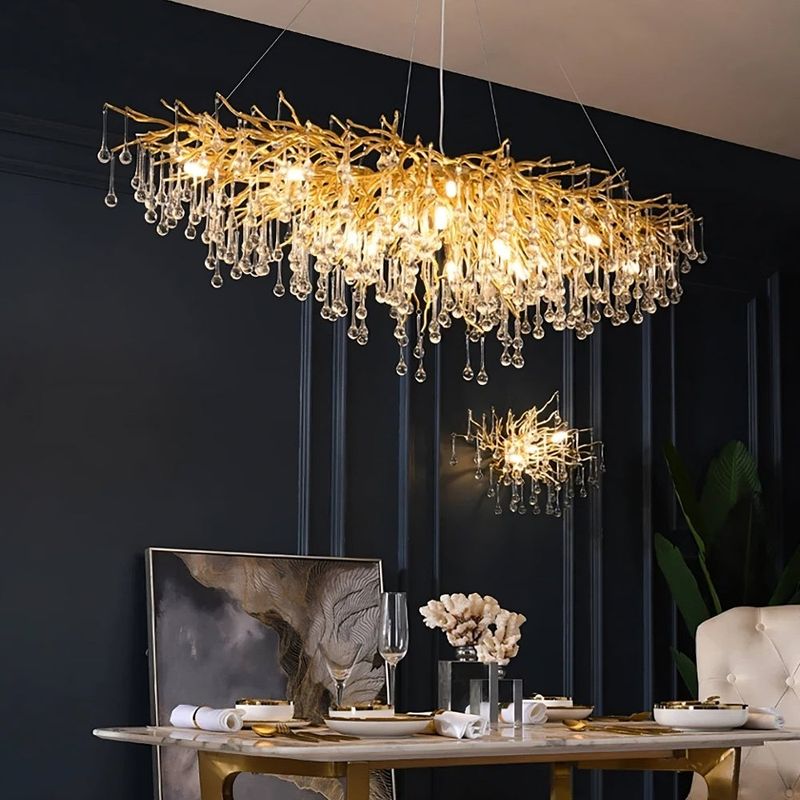
Nothing commands attention quite like a gorgeous chandelier suspended above your dining table. This eye-catching fixture serves as the room’s jewelry, creating an instant focal point.
When selecting the perfect piece, consider your table’s size and the ceiling height. The right chandelier ties everything together while casting a warm, flattering glow that makes everyone look their best during dinner parties.
2. Wainscoting or Wall Paneling

Adding architectural interest to plain walls, wainscoting brings instant character to dining spaces. Classic and textured, it adds dimension without overwhelming the senses.
Whether painted crisp white for a traditional look or in a bold color for modern flair, paneled walls elevate the entire room. The structured lines provide a sophisticated backdrop that makes even simple furniture appear more expensive and intentional.
3. Vintage Sideboards
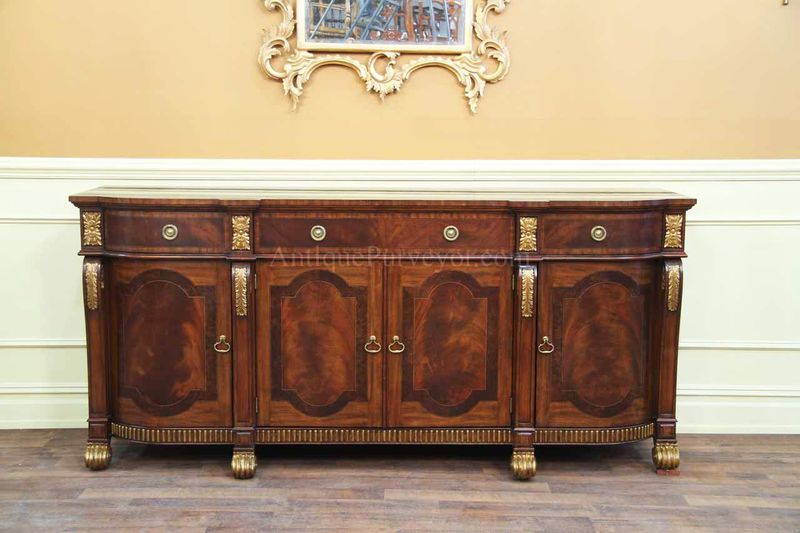
Hunting for the perfect statement piece? A beautifully restored vintage sideboard combines practical storage with irresistible character that new furniture often lacks.
These wooden workhorses offer ample space for storing dinnerware while their tops provide the ideal surface for serving or displaying treasured objects. The patina of age on these pieces tells a story, bringing warmth and soul to dining rooms that fresh-from-the-showroom furniture simply cannot match.
4. Upholstered Dining Chairs
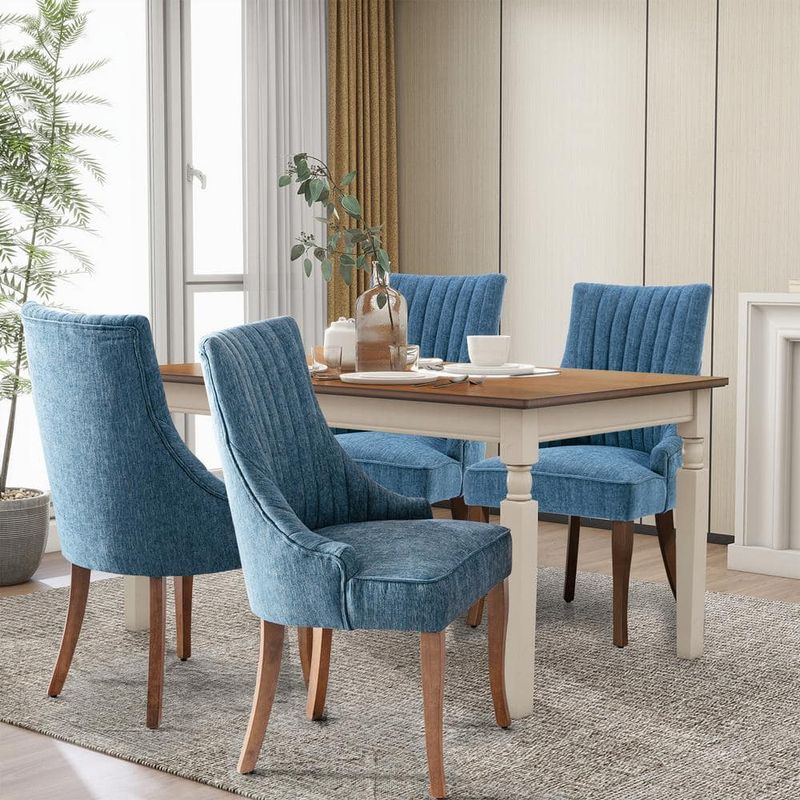
Comfort meets style when you opt for chairs with proper padding and beautiful fabric. Your guests will appreciate the extra cushioning during long, lingering meals and conversations that stretch well into the evening.
Fabric-covered seats add color, pattern, and texture to the dining space. They soften the hard edges of tables and provide an opportunity to introduce personality. For busy households, performance fabrics offer stain resistance without sacrificing style.
5. Natural Wood Tables

The heartbeat of any dining room comes from a solid wood table that showcases nature’s artistry. Each grain pattern tells a unique story, creating a one-of-a-kind centerpiece for family gatherings.
Unlike manufactured alternatives, these tables develop character over time, with each nick and watermark adding to their charm. They ground the space with organic warmth and can adapt to nearly any design style, from rustic farmhouse to sleek contemporary.
6. Gallery Walls with Coordinated Frames

Family photos and cherished artwork transform bare walls into conversation starters when arranged in a thoughtful gallery display. The key lies in creating visual harmony through coordinated frames.
Whether you choose matching frames for a formal look or complementary styles for eclectic charm, the collection becomes greater than its parts. This personalized touch invites diners to linger, sharing stories inspired by the images surrounding them.
7. Neutral Color Palettes

Soft, soothing hues create an atmosphere of refined elegance that never goes out of style. Against this versatile backdrop, your table settings and food become the stars of the show.
Creams, taupes, and gentle grays provide a timeless foundation that works with any accent color you might introduce seasonally. This approach offers incredible flexibility, allowing you to refresh your dining room’s look without repainting or major renovations.
8. Floor-Length Curtains
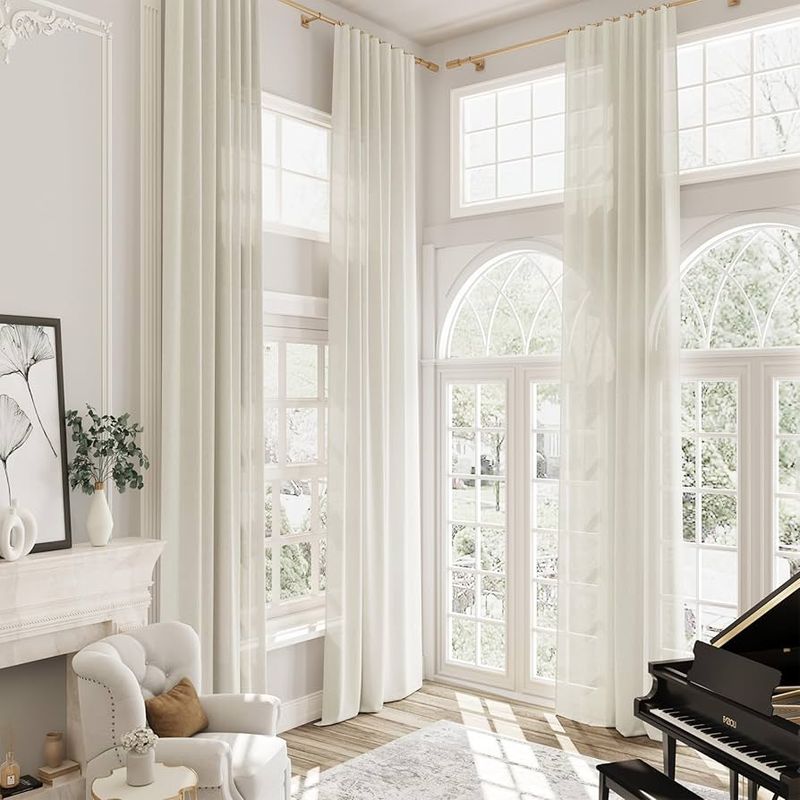
Fabric that gracefully extends from ceiling to floor instantly elevates a dining space, adding height and softness in one elegant move. These vertical elements draw the eye upward, making ceilings appear higher.
When selected in materials that complement your color scheme, properly hung drapes frame windows beautifully. They also provide practical benefits like light control for mood setting and insulation against drafts, ensuring comfort during lengthy dinner gatherings.
9. Built-In Banquettes

Think of the cozy corner booth at a beloved neighborhood diner – that’s the vibe a custom banquette brings home. A well-tailored bench turns underused corners into prized dinner-time destinations, adding charm, function, and a dose of architectural interest without crowding the room.
With hidden storage beneath the cushions, they cleverly conceal seasonal items or rarely used serving pieces. The upholstered seating adds an inviting softness that encourages guests to settle in, making even quick weeknight dinners feel special.
10. Soft, Layered Lighting
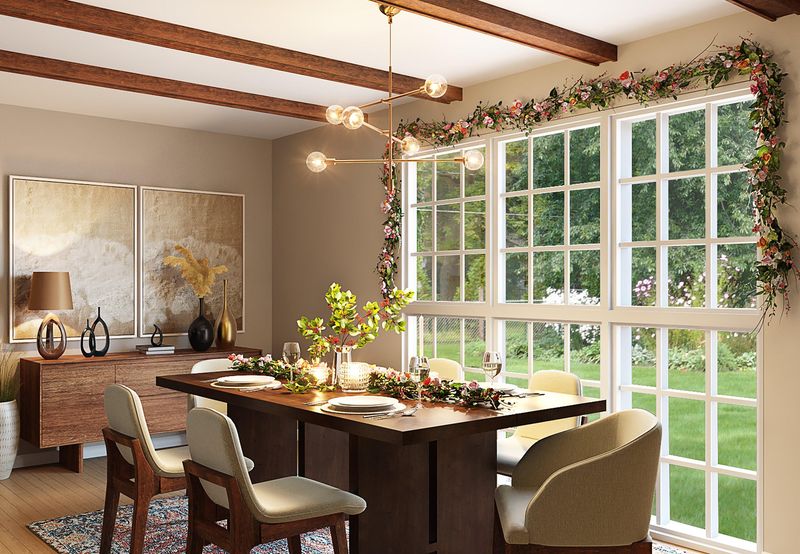
Magical dining experiences rely on the perfect illumination – never harsh, always flattering. Smart lighting design incorporates multiple sources at different heights to create depth and ambiance.
Wall sconces provide a gentle wash of light while table lamps on sideboards add intimate pools of warmth. Dimmers are essential for adjusting the mood from bright family breakfasts to romantic dinners.
11. Fresh Greenery or Floral Arrangements
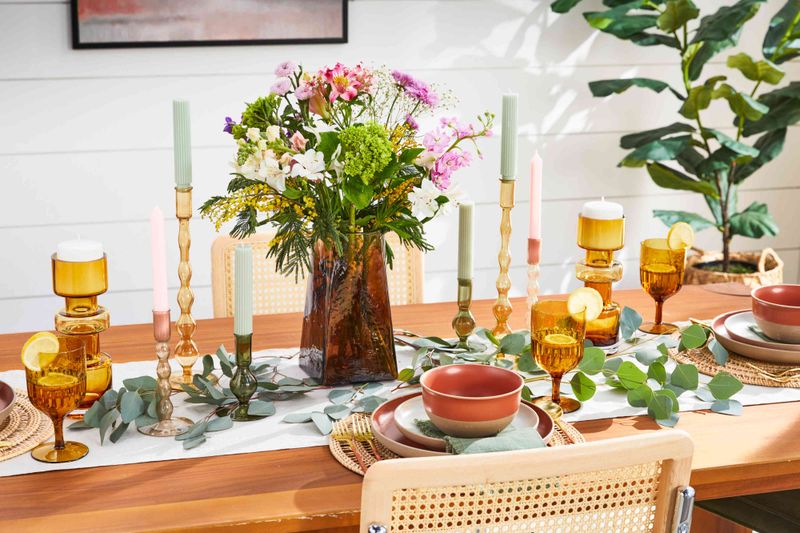
A touch of nature breathes life into dining spaces, connecting indoor environments with the outside world. Even simple stems in a beautiful vase make meals feel more special and intentional.
Rotating seasonal blooms or evergreen branches keeps the space feeling current without major decorating efforts. For those without green thumbs, high-quality faux plants can provide the same visual refresh without maintenance concerns.
12. Elegant Table Settings
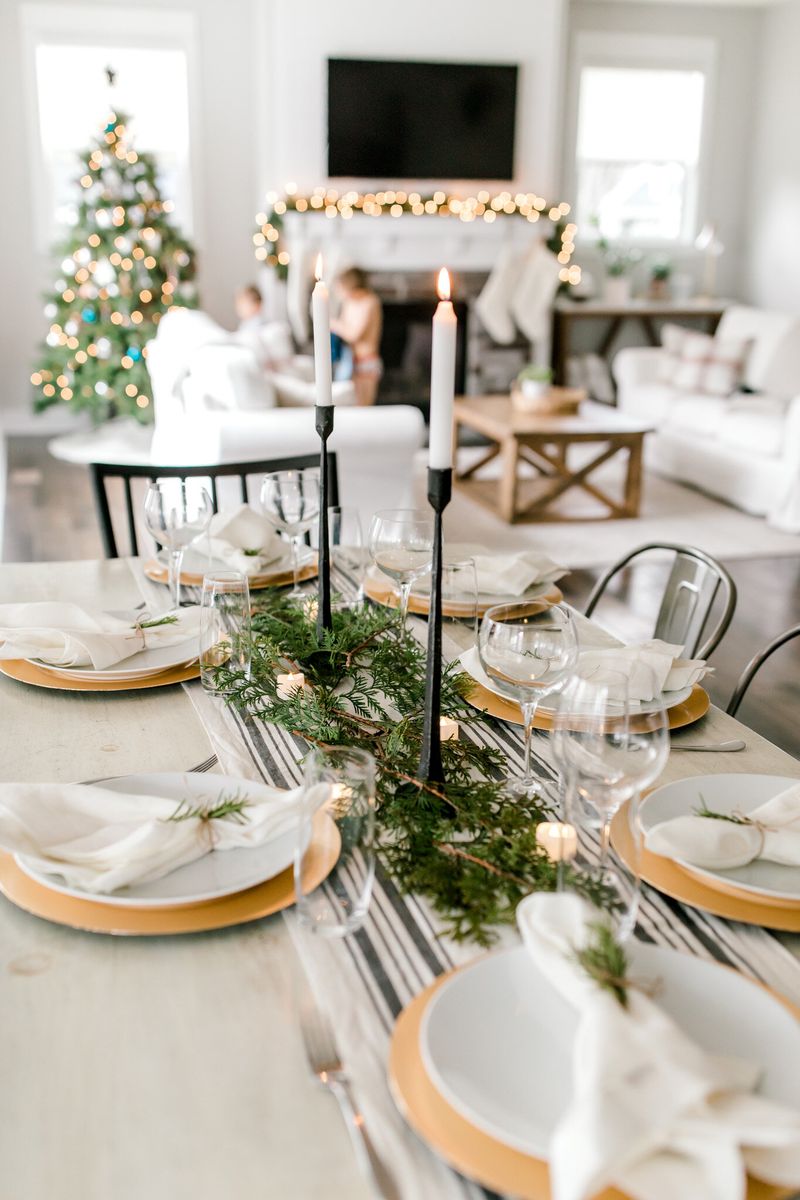
Well-chosen tableware speaks volumes about your attention to detail, even when the dining table isn’t being used for meals. A few carefully placed elements create an inviting tableau that makes the room feel complete.
Linen napkins, quality dishware, and a simple centerpiece signal that the space is ready for gathering at a moment’s notice. This perpetual readiness transforms a functional eating area into a space that feels consistently welcoming.
13. Architectural Ceilings

The often-forgotten “fifth wall” offers tremendous potential for creating dining room drama. Coffered designs, exposed beams, or even a contrasting paint color can transform an ordinary ceiling into a conversation piece.
These overhead details add character without consuming valuable floor space. They create a sense of intimacy in larger rooms while providing visual interest that complements your furnishings below.
14. Area Rugs That Anchor the Table

Properly sized floor coverings create invisible boundaries that help define the dining area, especially in open-concept homes. The right rug grounds furniture groupings while adding color, pattern, and crucial sound absorption.
For practical protection, choose materials that withstand inevitable spills. The ideal dining rug extends at least 24 inches beyond the table’s edge, allowing chairs to remain on the rug even when pulled out for seating.
15. Mirrors That Reflect Light
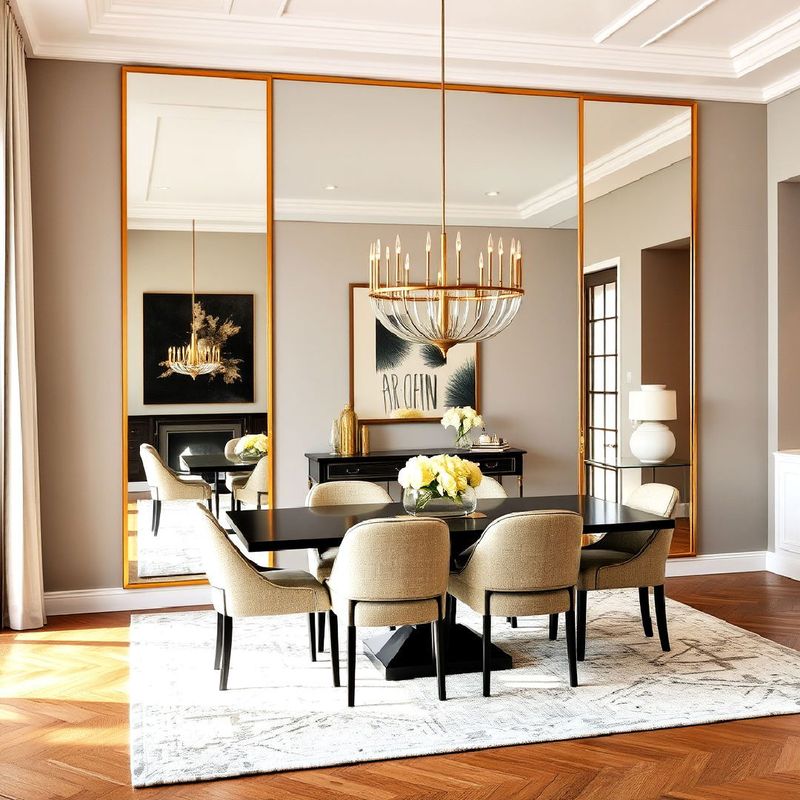
Strategically placed reflective surfaces perform magic in dining spaces, bouncing light around the room and creating the illusion of more square footage. A well-positioned mirror can capture and multiply candlelight during evening meals.
Beyond their practical benefits, decorative mirrors serve as artwork, adding sparkle and dimension. For maximum impact, position your mirror to reflect something beautiful, like a chandelier or window view.
16. Clashing Chair Sets

Mismatched dining chairs can look deliberately eclectic when done right, but random chairs collected without thought create visual chaos. When styles, heights, and materials fight for attention, the entire room feels disjointed.
The worst offenders are chairs from completely different design eras paired without consideration for scale or proportion. This hodgepodge approach makes even expensive tables look like temporary solutions rather than thoughtful design choices.
17. Overly Themed Decor
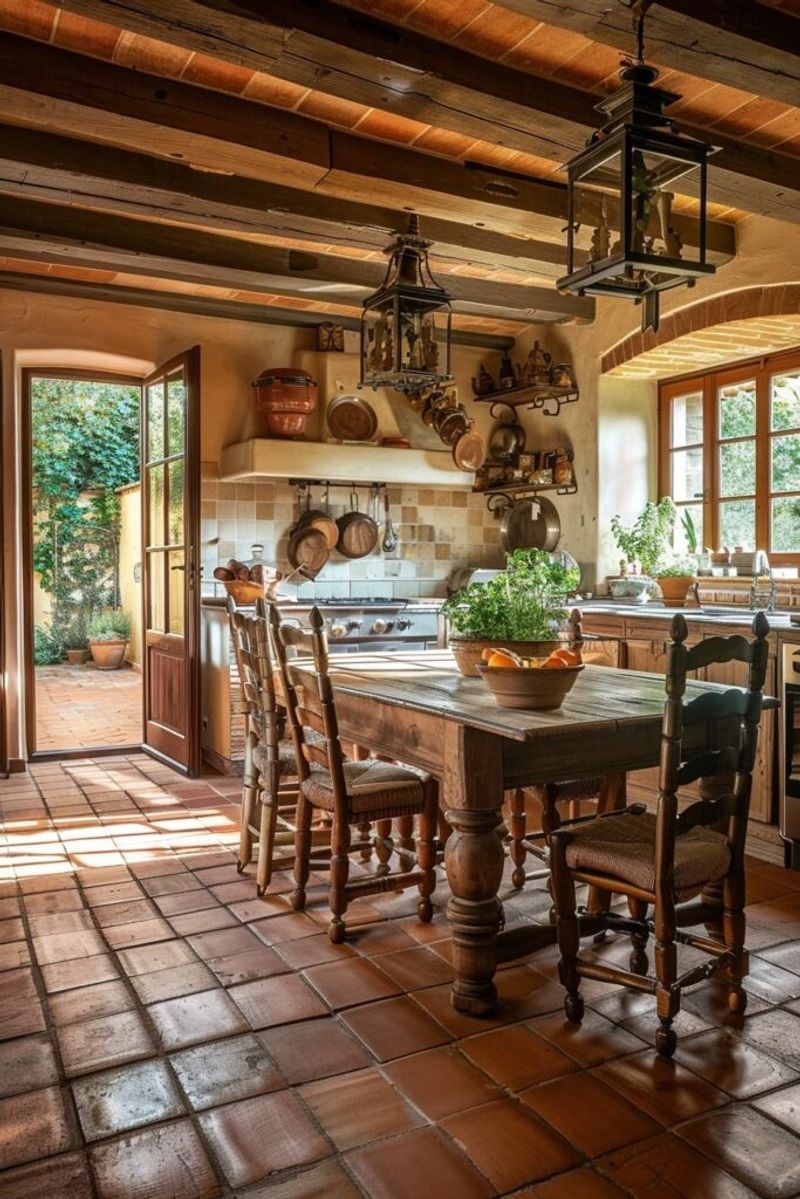
Committing too heavily to a specific design theme can quickly transform your dining room into a themed restaurant parody. The infamous “Tuscan kitchen” explosion of the early 2000s left many homes looking like mediocre Italian eateries.
When grape motifs, wine bottle decorations, and faux Mediterranean finishes collide, authenticity disappears. A light touch with thematic elements allows for personal expression without crossing into kitschy territory that quickly becomes dated.
18. Fluorescent Overhead Lighting

Harsh institutional lighting has no place in a room dedicated to enjoyable dining experiences. The cool, unforgiving glare of fluorescent tubes casts unflattering shadows and can make even the most appetizing food look unappetizing.
This lighting choice gives residential spaces an unfortunate office or commercial kitchen feel. The constant subtle flicker and buzzing sound from older fixtures adds another layer of discomfort to meals that should be relaxing.
19. Outdated Wallpaper Borders
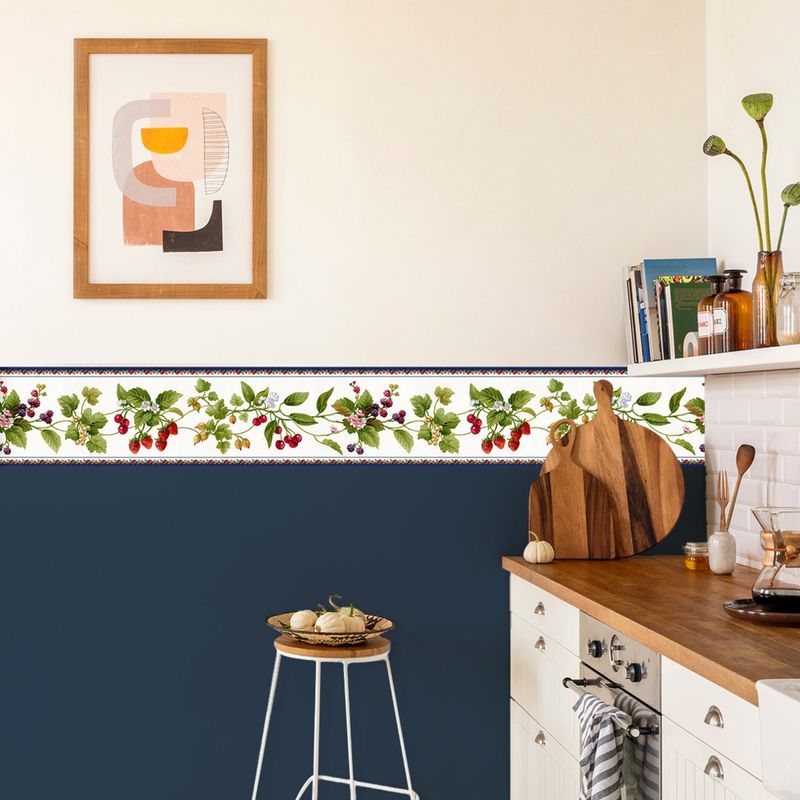
Once the crown jewel of 1990s home decor, those narrow strips of patterned paper running along the ceiling line have long overstayed their welcome. Particularly aging are country-themed borders featuring geese, hearts, or fruit baskets.
These horizontal bands visually chop up walls and date a room instantly. Their removal makes an immediate improvement, allowing the eye to travel smoothly around the space without interruption from designs that scream “time capsule.”
20. Bulky China Cabinets Overflowing with Clutter

Massive wooden display cases packed with rarely-used wedding china and dusty figurines create visual heaviness that overwhelms dining spaces. These imposing furniture pieces often become glorified storage units rather than thoughtful displays.
When every inch is crammed with collectibles, nothing stands out as special. The resulting visual noise competes with conversation and food presentation. A curated approach with breathing room between objects allows prized possessions to shine while maintaining a sense of calm.

